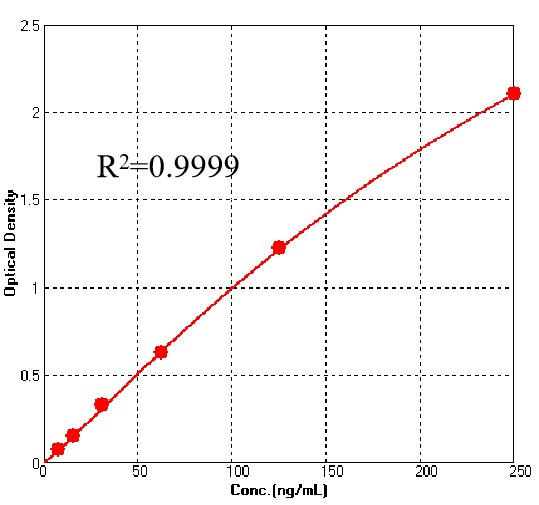Broad Mucosal and Systemic Immunity in Mice Induced by Intranasal Booster With a Novel Recombinant Adenoviral Based Vaccine Protects Against Divergent Influenza A VirusLi, Wang, Guo
et alJ Med Virol (2025) 97 (4), e70326
Abstract: The development of broad-spectrum universal influenza vaccines and optimization of vaccination strategies to address the threats posed by pandemics and emerging influenza viruses are critical for public health. In this study, an adenovirus type 5 vector-based influenza vaccine carrying the hemagglutinin (HA) stem of H1, HA stem of H3, and neuraminidase (NA) of N1 from the influenza virus was constructed. Immune responses were evaluated in mice using various vaccination strategies: prime-only (intramuscular [IM] or intranasal [IN]) and prime-boost (IM + IN). Compared with the prime-only strategy, the prime-boost strategy significantly enhanced the systemic immune response, inducing higher levels of antigen-specific IgG, mucosal IgA, and T cell immunity in the spleen and lungs. Furthermore, the IN boosting strategy provided complete protection in mice challenged with the H1N1-PR8, rgH3N2-X31, and rgH5N1-Vietnam viruses, significantly reducing viral loads in the lungs and alleviating lung tissue pathologies. In conclusion, this study elucidates potential avenues for the development and application of universal influenza vaccines using customized mucosal boosting strategies.© 2025 Wiley Periodicals LLC.
Tracking Seasonal Influenza Trends in South Tyrol During 2022/2023 Using Genomic Surveillance DataBianconi, Manica, Moroder
et alInfluenza Other Respir Viruses (2025) 19 (4), e70083
Abstract: Influenza seasons are characterized by a complex interplay of co-circulating strains with high spatial and temporal heterogeneities. Surveillance is crucial for monitoring the spread and evolution of the virus and design effective public health response strategies.We combined epidemiological, virological, and genomic surveillance data to provide a comprehensive analysis of influenza subtypes circulating in the South Tyrol region (Italy) during season 2022/2023, leveraging phylogenetic and phylodynamic approaches.Clinical samples were collected from patients exhibiting influenza-like symptoms and evaluated by molecular diagnostics. Whole genome sequencing was conducted, and the hemagglutinin (HA) gene sequences were used for phylogenetic analysis. A birth-death skyline model was applied to estimate strain-specific effective reproduction numbers (Re) and attack rates.Out of 4891 samples tested, 862 tested positive for influenza, of which 224 genomes were sequenced. Phylogenetic analysis of HA gene revealed A(H3N2) strains predominantly clustering in clade 3C.2a1b.2a.2b, followed by 3C.2a1b.2a.1b. A(H1N1pdm09) strains predominantly clustered in clade 6B.1A.5a.2a. Exclusive circulation of B (Victoria) subtype strains aligned with the global trend, all falling within clade V1A.3a.2. Phylogenetic analyses indicate that the strains isolated in the South Tyrol region closely resembled those circulating in the rest of Italy and Austria. Re peaked at 1.16-1.35 (95%CI) for A(H3N2), 1.06-1.34 for A(H1N1pdm09) and 1.02-1.29 for B (Victoria). 95%CI of attack rates were 6.3%-33.5% for A(H3N2), 0.6%-5.0% for A(H1N1pdm09), and 0.8%-6.5% for B (Victoria).Epidemiological estimates from traditional surveillance data can be corroborated by those derived from genomic sequencing, providing more robust assessments of viral transmissibility and attack rates with limited additional effort.© 2025 The Author(s). Influenza and Other Respiratory Viruses published by John Wiley & Sons Ltd.
Antiviral Activity of Berbamine Against Influenza A Virus InfectionCho, Choi, Ma
Int J Mol Sci (2025) 26 (6)
Abstract: Berbamine (BBM) is a bibenzyl isoquinoline present in the traditional Chinese herbal medicine Berberis amurensisis Rupr. The present study demonstrates that BBM exerts strong antiviral efficacy against influenza A virus (IAV) infection. We examined the anti-IAV effect of BBM using green fluorescent protein (GFP)-expressing influenza A and H1N1 IAV. The fluorescence microscopy, fluorescence-activated cell sorting analysis, and plaque assay showed that BBM significantly hinders IAV infection. The immunofluorescence analysis confirmed the anti-influenza activity of BBM. From the time-of-addition and hemagglutination inhibition results, it is elucidated that the antiviral effect of BBM is closely related to its inhibitory effect against viral binding and entry at an early infection stage. Our findings imply that BBM has the potential to be developed as a potent antiviral drug against influenza viral infection.
Analysis of polyclonal and monoclonal antibody to the influenza virus nucleoprotein in different oligomeric statesMyers, Conlon, Gallagher
et alVirus Res (2025)
Abstract: Influenza virus nucleoprotein (NP) is one of the most conserved influenza proteins. Both NP antigen and anti-NP antibodies are used as reagents in influenza diagnostic kits, with applications in both clinical practice and influenza zoonotic surveillance programs. Despite this, studies on the biochemical basis of NP diagnostic serology and NP epitopes are not as developed as for hemagglutinin (HA), the fast-evolving antigen which has been the critical component of current influenza vaccines. Here, we characterized the NP serology of mice, ferrets, and human sera and the immunogenic effects of NP antigen presented as different structural complexes. Furthermore, we show that the classical mouse anti-NP mAb HB65 could detect NP in some commercial influenza vaccines. MAb HB65 bound a linear epitope with nanomolar affinity. Our analysis suggests that linear NP epitopes paired with their corresponding characterized detection antibodies could aid in designing and improving diagnostic technologies for influenza viruses.Copyright © 2025. Published by Elsevier B.V.
























































 膜杰作
膜杰作 Star Staining
Star Staining















